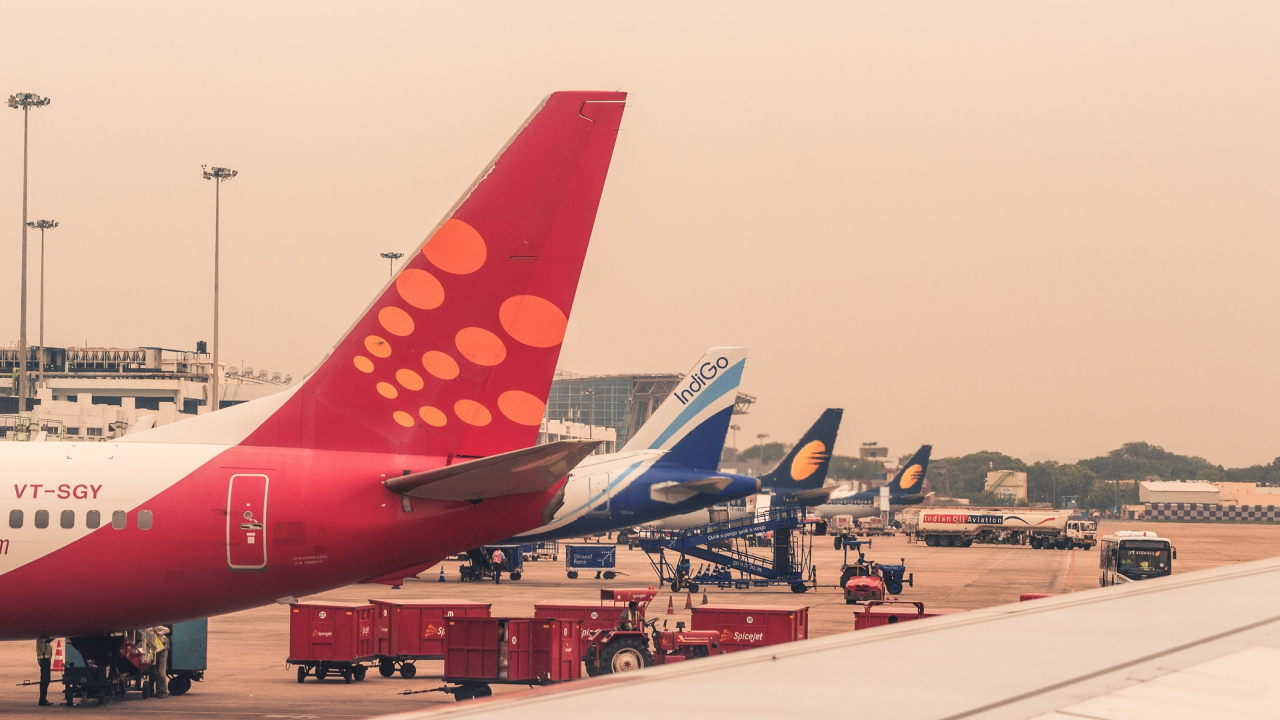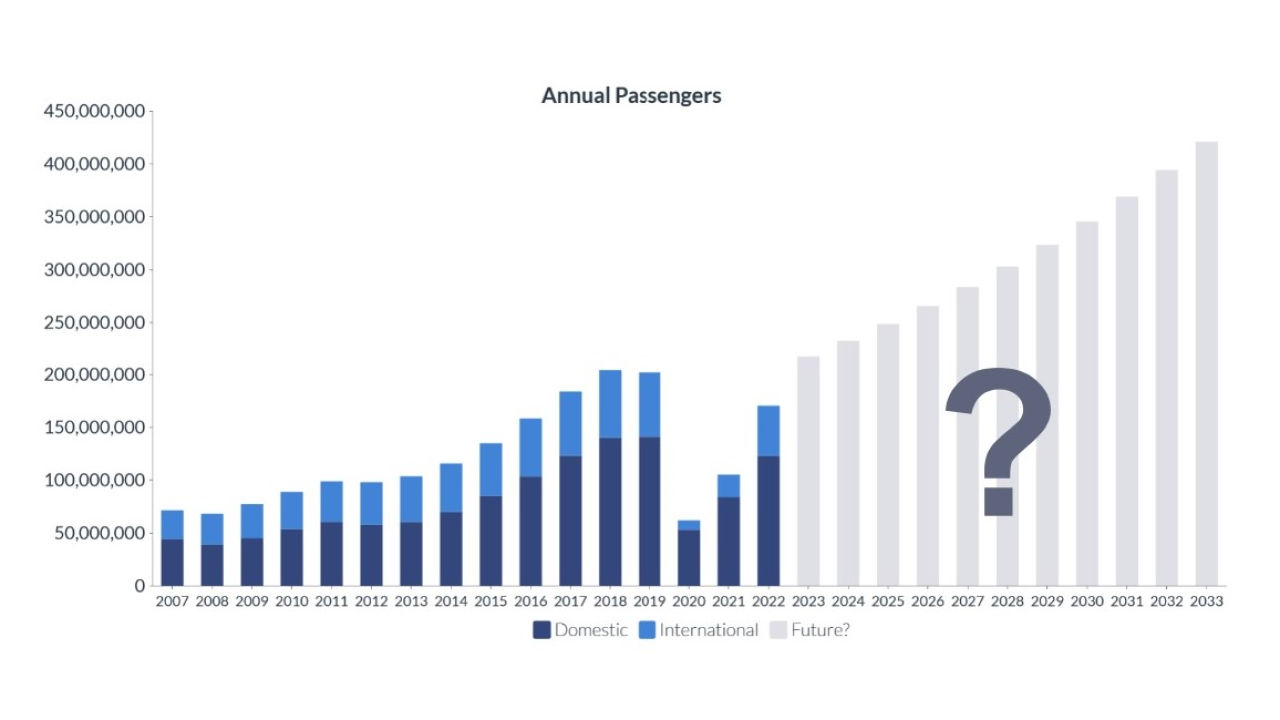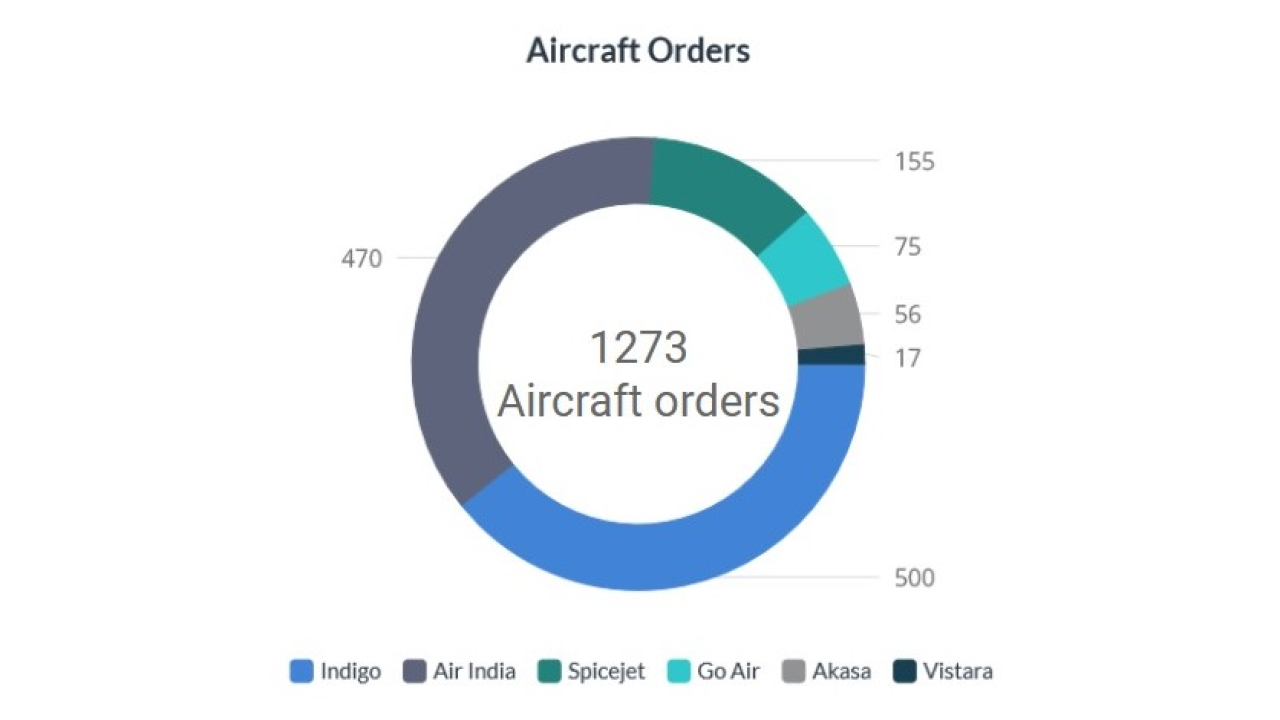Indian Air Traffic Growth Presents Major Investment Opportunities
Dion Zumbrink
April 19, 2023

Jets at Mumbai's Chhatrapati Shivaji International Airport, India.
© Lenstravelier/Unsplash
Indian air traffic grew rapidly in the past decade, especially between 2014 and 2019 when traffic almost doubled to reach 200 million annual passengers. While the market took a big hit from COVID, growth has rebounded quickly.
COVID19 led to a 70% reduction in air traffic, and recovery was slow, even into Q1 2022, however the country then experienced a strong improvement for the remainder of 2022, reaching 86% and 74% of 2019 traffic levels for domestic and international traffic, respectively. When looking at monthly statistics, we can see that 2019 levels have already been exceeded in the first months of 2023.
Moreover, it is expected that the country will experience another high-growth period, repeating the boom from 2014 to 2019. For example, Boeing in its latest CMO has projected a growth rate for India at nearly 7% until 2041, by far the highest region, and 3 percentage points higher than the global average.

Indian passenger numbers have rebounded fast.
Let’s look at the market and the main factors for this expectation in more detail.
Macro-economic Factors
Creating the underlying demand for this surge in air traffic is the large and ever-growing population combined with economic growth that is expected to be among the highest in the world.
The current population of 1.4 billion (twice that of Europe while not having even a fifth of its air traffic) is expected to grow to between 1.7-2 billion people. But more importantly, more than 40% of this population is under 25 and a large share will rise into the middle class. An EY study expects GDP per capita to increase 6-fold by 2035. This development over such a large population will lead to an incredible increase in consumption, including (air) travel.
Banking on a young workforce, a strong service industry, continued digitalization and continued government spending, the GDP growth predictions are over 6% for the next five years and over 4% in the medium term helped by the Indian economy showing resilience against global economic shocks.
Additionally, many Indians emigrate to work abroad. Currently, around 32 million Indians or people of Indian origin are living abroad, resulting in strong VFR (visiting friends and relatives) demand.

Indigo has increased its market share since the pandemic.

Air India and Indigo dominate the order books.
Airline Growth
Significant developments in the Indian airline industry have reshaped the landscape and paved the way for future further growth.
Tata Group recently acquired Air India and Air Asia India to form a large group with Vistara, with a combined domestic market share of 24% in 2022. The tie-up will need to improve efficiencies to compete with market-leading low-cost airline Indigo, which has a market share of 56%, up from 47% in 2019. These two players now control 80% of the domestic market in India. While Vistara has grown in the recent past, the coming years could see Air India regain its leading position, with 470 aircraft on order.
The strong recovery of Indigo (2019 +2%) and Vistara (2019 +53%) shows their healthy post-pandemic position. Other medium-sized airlines such as Go Air and Spice Jet are still lagging in their recovery, mainly due to fleet delivery and parts availability issues. These carriers have therefore lost market share which dropped to a combined 18% in 2022.
A new airline in the market is Akasa which commenced services in summer 2022 and currently operates 19 B737 MAX 8 aircraft with a further 56 on order. It announced plans to place additional orders in excess of 100 aircraft before year-end and plans to start international flights. The carrier could become another medium player with a market share of 15-20%.
Combining all airlines’ growth plans, the fleet could grow by almost 1,200 aircraft over the next five years, from the current of 700. This indicates the overall air traffic market size that can be expected.
Airport Infrastructure Growth
Ultimately, airports need to cater to this demand. Historically, in line with rising traffic, the number of airports with commercial operations has grown from 74 in 2014 to 148 currently. New greenfield projects such as Navi Mumbai, a capital airport in New Delhi, and a further seven smaller ones are planned to be operational by 2025. In total, there are approved plans for a further 21 greenfield airports.
To support the growth, the government estimated an investment of around $12 billion, of which $9 billion is expected to come from the private sector for new airports, and upgrades and expansions to existing gateways. At least 12 more airports are expected to be privatized in the short-term, providing an opportunity for investors to enter this high-potential market.
